#spring allergies
Explore tagged Tumblr posts
Text

#We are definitely here#And the trees hardly have any leaves#Pollen#spring allergies#allergies in general
26 notes
·
View notes
Text
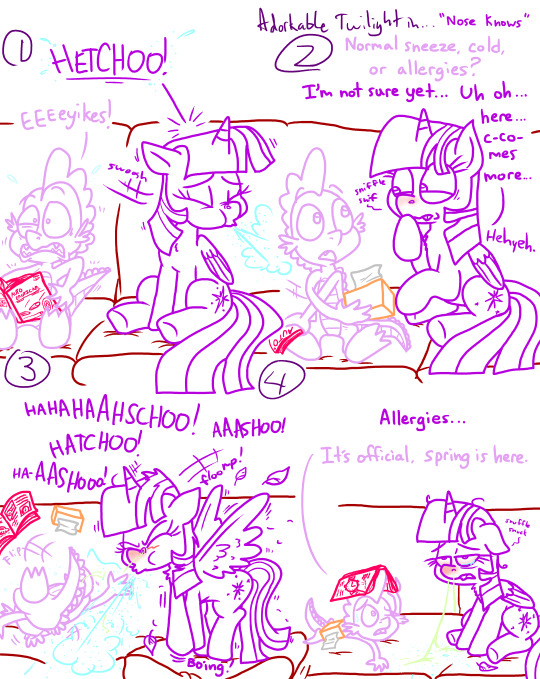
Adorkable Twilight & Friends - “Nose Knows"
Adorkable Patreon Pals
Adorkable Twilight & Friends Twitter
Adorkable Twilight & Friends Wiki
Adorkable Twilight & Friends Deviant Art
#nose knows#allergies#spring allergies#sneezing#sneeze#snot#book#adorkable twilight#adorkable twilight & friends#adorkable#comic#twilight sparkle#humor#cute#spike#couch#wings#red nose#stuffed nose#allergy#hay fever#sneezy#reading#flipping#tissues
99 notes
·
View notes
Text

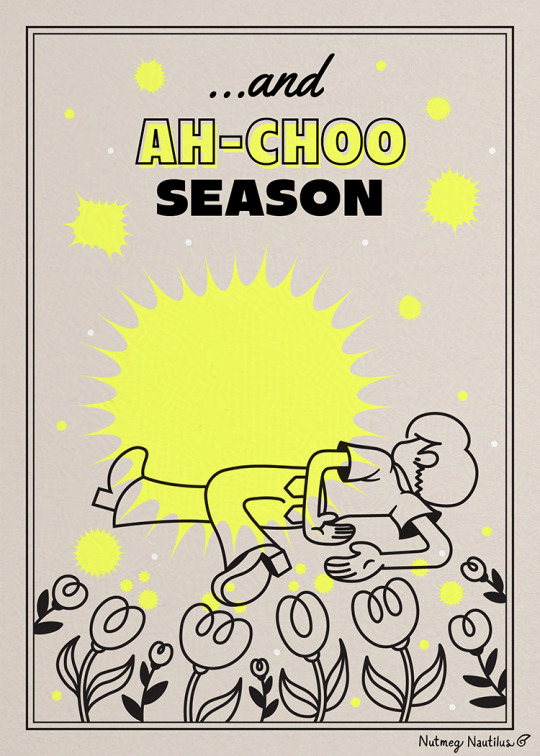
Happy allergy season to all who "celebrate"
12 notes
·
View notes
Text
It's spring and guESS WHOSE ALLERGY HAS TAKEN OVER???
MINE! YIPPIE I AM SO HAPPY (i want to die)(not really)(but you get the point)
#spring allergies#vee stuff#pliz end my torture#i hate spring#bring back winter#mother nature wha is your problem??#oh lord apollon help me
8 notes
·
View notes
Text
Allergies
Author: Autobot2001 Genre: Fanfiction Fandom: NBC Hannibal Rating: G Warning: None Pairing: None Description: Jamie's allergies act up. Hannibal and Will think she's sick again.
@feveruary: alt 4; Sneezing Fit @fluffyfebruary: The last time @fluffbruary: clean
Ao3 or under the cut
Spring is the beginning of Jamie's questioning whether she's sick with a cold or if her allergies are acting up. Unknown to her, pollen is high in DC as she, Hannibal, and Will are at the park. They sit at their usual spot by the duck pond. Hannibal and Will sit on the bench. In contrast, Jamie sits on the grass, feeding the ducks and trying to catch one to pat. "The poor ducks," Will smiles. Once the bread is gone, the ducks return to the pond. Jamie starts sneezing repeatedly. "Are you ok?" Will asks. "I'm fine," Jamie argues. "The last time you said you were fine, you weren't over the flu," Hannibal argues. Hannibal feels her forehead. She doesn't feel warm. Jamie is annoyed with the two worrying like this, especially when Hannibal decides it's time to leave the park. The three go to Jamie's house.
Hannibal and Will observe Jamie as she sits on the couch. They still believe she's sick, but they're so worried about how rough the cold and flu season has been for Jamie that they forget her allergies. Will realizes that the issue is Jamie's allergies as he looks at the weather for tomorrow. "Oh, that explains it. Spring time, so now the issue is her allergies." Hannibal nods in agreement. "You really should deep-clean the house," Hannibal comments. "I'll hire a cleaning service." Jamie knows there's no point in arguing with Hannibal about his. She knows he'll hire someone to clean her house while she's at work by Tuesday. Hannibal, Jamie, and Will hope that Jamie's allergies won't be a problem this year.
#nbc hannibal#nbc hannibal lecter#hannibal lecter#nbc will graham#will graham#jamie (oc)#feveruary#feveruary 2025#fluffuary#fluffuary 2025#fluffbruary 2025#day 28#sneexing fit#the last time#clean#spring#spring allergies#high pollen count#sneezing fit#hannibal and will think jamie is getting sick again#hannibal suggest jamie deep cleans her house
6 notes
·
View notes
Text
I hate spring allergies, I didn’t get much sleep cuz my nose was so stuffed up and my throat hurt from coughing so much. Spring sucks ass
5 notes
·
View notes
Text
How Long Does Allergy Season Last ? Timeline and Triggers
Allergy season can be a miserable time for millions of people worldwide. Sneezing, runny nose, itchy eyes, and congestion are just some of the symptoms allergy sufferers face during this time. But one of the most common questions people ask is: how long does allergy season last for? The answer isn’t as straightforward as you might hope, as allergy season can vary depending on your location,…
#allergic rhinitis#allergy relief#allergy season#allergy symptoms#allergy timeline#allergy tips#fall allergies#grass pollen#hay fever#managing allergies#mold spores#pollen allergies#seasonal allergies#spring allergies#tree pollen#weed pollen
2 notes
·
View notes
Text
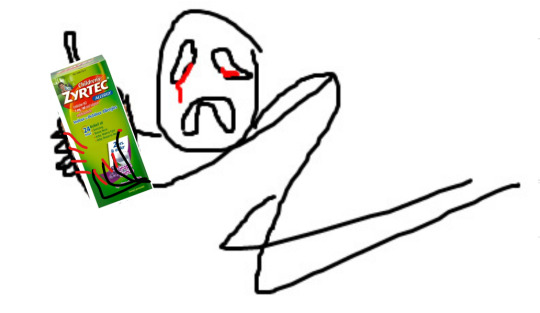
zyterc save me from spring allergies they're killing me ,, zyterc PLEASE ,,,
itchy/watery eyes, clogged nose that's also somehow running, tight throat,, why must my genes make me allergic to pollen. i legit can't focus on anything my itchy eyes are making my brain fog up
#pollen#spring allergies#why must the universe curse me with this#cheesecake yaps#just looked at the post again and realized i spelled zyterc wrong#my eyes are so blurry with tears i misspelled it
3 notes
·
View notes
Text
"mouth-breather"
ITS SPRING, FUCKER, AREN'T WE ALL?
4 notes
·
View notes
Text
HOW TO HELP YOUR DOG DEAL WITH SEASONAL ALLERGIES
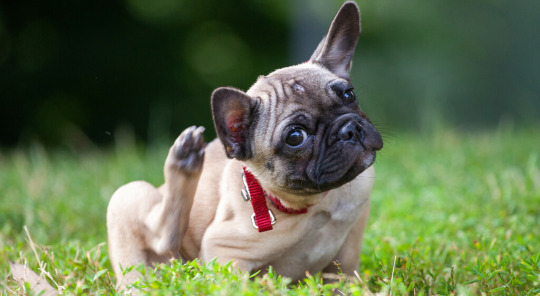
For some people, seasonal allergies are a real pain. Whether you’re bothered by a runny nose, itchy eyes, or endless sneezing, it can be a tough time of year to endure.
Just like their human parents, some dogs suffer from the aggravating effects of seasonal allergies as well. Besides chemicals such as those found in household cleaning products, cigarette smoke and certain perfumes, dogs can also be allergic to natural, seasonal substances. This can include plant and tree pollens, mold spores, dust, feathers and fleas.
A dog’s allergy symptoms are generally similar to those experienced by humans: the immune system overreacts to one or more offending substances, leading to itchiness and irritation. Your dog may lick or scratch themselves, develop irritated eyes, or sneeze repeatedly. Some dogs experience itchy, swollen skin, while others suffer from diarrhea and vomiting. In certain cases, a secondary infection may develop.
Here are a few things you should do to help control any discomfort your dog may be dealing with due to seasonal allergies and reduce the risk of more serious problems.
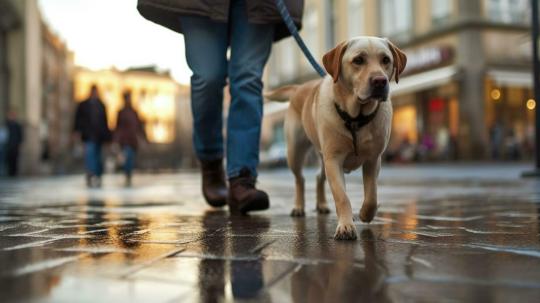
ADAPT YOUR DAILY WALK ROUTINE
If possible, avoid walking your dog in the early morning or late afternoon, when pollen levels are typically highest. Steer clear of fields and parks where offending plants are common.
When you return home, wipe your dog’s body and paws with a moist cloth or a hypoallergenic, fragrance-free grooming wipe from your local pet store. This will remove excess pollen and other allergens from your dog’s fur and skin without the hassle of a full bath. Pay special attention to the paws, as the sensitive skin here is often affected by allergens.
Some pet parents soak their dog’s paws in apple cider vinegar to remove pollen and other substances. If using this method, mix 2 parts water with 1 part apple cider vinegar. Another solution is to put boots on your dog’s paws to prevent them from stepping in irritants and then tracking them into your house.

CLEAR THE AIR… AND OTHER SURFACES
Inside your home, regularly change air filters to cut down on airborne allergens that enter through open doors and windows. Running an air conditioner or a dehumidifier will help remove moisture from interior air, making it harder for mold to grow in your home. Minimize the amount of time your dog spends in damp environments, such as basements, bathrooms, or laundry rooms, as these places are more susceptible to mold growth. Vacuum at least once a week, and remember to clean curtains and rugs that may have picked up dust and pollen.
Protect your dog from backyard dangers. Many popular veggies like onions, garlic, tomatoes, and chives are poisonous to dogs and should be fenced off to prevent your furry friend from getting into them.

DON’T SLEEP ON IT
It's important to keep the surfaces your dog sleeps on clean, as they can quickly become covered in allergens. To achieve this, wash them in hot water every week. To make the task easier, consider putting towels or blankets on top of beds and chairs, and make sure to keep any offending substances away from the surface underneath. Also, don't forget to wash any soft toys your dog plays with regularly.

JUMP IN THE BATH
To prevent dry and itchy skin in dogs, it is recommended to bathe them more often with the advice of a veterinarian. While washing their fur, use a gentle, hypoallergenic anti-itch shampoo that contains a soothing ingredient like oatmeal, aloe, or evening primrose oil. Some dog owners prefer to give their pets a 10-minute soak in a bath mixed with a gentle moisturizing oil.

SUPPLEMENT YOUR DOG’S DIET
Consider giving your furry friend a natural dietary supplement like fish oil or a fatty acid such as omega-3 or omega-6 oil to alleviate itchiness and promote healthy skin. Coconut oil has also been shown to be effective in suppressing allergic reactions and improving skin health. To ensure your dog's overall well-being, it is essential to keep their drinking water and bowl clean and free of any contaminants.

FURTHER TREATMENTS
If your dog is constantly licking, scratching, or chewing, and has red, irritated skin or hair loss, it's best to schedule an appointment with your veterinarian. Depending on the severity of the problem, a professional can provide more aggressive treatments such as antihistamines, steroids, or allergy shots, which are also known as immunotherapy.
3 notes
·
View notes
Text
#allergy season#hayfever#survive allergies#allergy relief#spring allergies#pollen problems#allergy tips#sneeze free#allergy hacks#breathe easy#seasonal allergies
0 notes
Text
Holistic Approaches to Seasonal Allergies
#allergies#allergy season#immunity#naturopathic approach to allergies#spring allergies#the immune system
0 notes
Text

It's that time of year again
#allergy season#spring allergies#graphic design#digital#original#2025#nutmeg art#'love is in the air!' TRUE. BUT THERE IS ALSO POLLEN /#AH-CHOO!!!!!!
1 note
·
View note
Text
Spring Allergies
Author: Autobot2001 Genre: Fanfiction Fandom: NBC Hannibal Rating: G Warning: None pairing: None Description: Jamie's seasonal allergies act up.
Day 28; @chaos-company's angstpril: alt 5; headache @whumpril: alt 7; congestion @aprilisthecruelestmonth: overwork
Ao3 or under the cut
One thing Jamie hates about spring is when her allergies act up. By the end of the day, she feels like crap. Jamie can't take days off because of her allergies, and even if she could, she'd refuse. Everyone at the FBI could tell Jamie's allergies were acting up. Some were happy that she had her own office, and she could close the door so they wouldn't hear her sneezing. Will was already worried about Jamie because she had been overworking for the past three weeks. Security told him she wouldn't leave until almost ten most nights. While Will questions why security didn't tell Jamie to leave at a reasonable time, he knew Jamie would argue with them. Today, he planned on making her leave when he left at five.
Will walks into Jamie's office at noon. Along with working late, he noticed how most days she wouldn't eat lunch. As he looked at Jamie sitting behind the desk, he noticed that her eyes were red. He walks closer to her, paying attention to her breathing. This is what he needed to know that Jamie wasn't sick, but her allergies were acting up. Will know that Jamie will deal with congestion and sometimes a headache. "Bad allergy day?" Will asks. "Yes," Jamie says and rests her head on the desk. Will sighs, knowing this wasn't a good reason for her to go home, even if the two have been working on a case together, and he could continue without her for the day. "I know poline is an allergy, but going outside will help. Come on, let's go get lunch." Will takes her hand and pulls her up. Jamie grabs her bag and the two leave the office.
The two walk to a local sandwich shop. Will sees that they also have soup and suggests that Jamie have soup. Jamie agrees and orders soup to help her throat. Jamie knows she'll still be dealing with her allergies for the rest of the day, but she refuses to go home, even if she could. There's a serial killer case to solve.
#NBC Hannibal#Hannibal NBC#Hannibal#Hannibal Lecter#NBC Will Graham#Will Graham NBC#Will Graham#Jamie (oc)#Angstpril#angstporil 2025#whumpril#whumpril 2025#aprilisthecruelestmonth#aitcm2025#day 28#headahce#congestion#overworked#spring allergies
1 note
·
View note
Text
FUCK spring FUCK flowers FUCK pollen FUCK dust FUCK grass FUCK the other kind of grass that i'm allergic to FUCK the third kind of grass that i'm allergic to FUCK the fourth kind of grass that i'm allergic to FUCK the wind carrying pollen right into my throat FUCK the price of antihistamines FUCK hayfever
#spring allergies#spring is here and i think not#allergies#fredposting#spring#i hope you all know this comes from a place deep in my heart#and from the raw spot in the back of my throat
1 note
·
View note
Text

Regular HVAC maintenance can significantly improve indoor air quality. Besides, regular AC maintenance helps prevent springtime allergies and ensures healthy airflow for you and your family.
0 notes